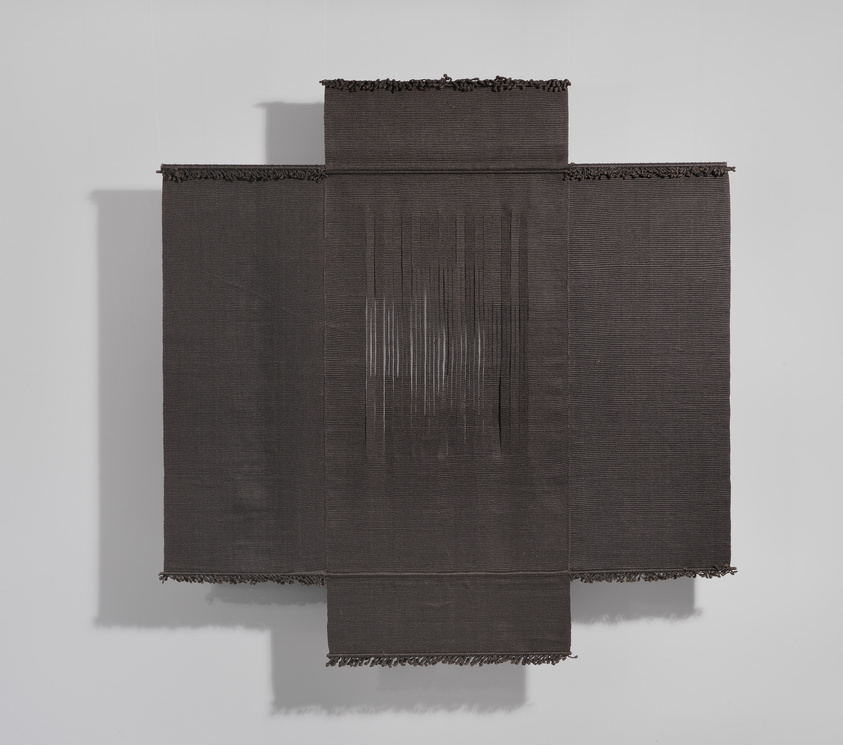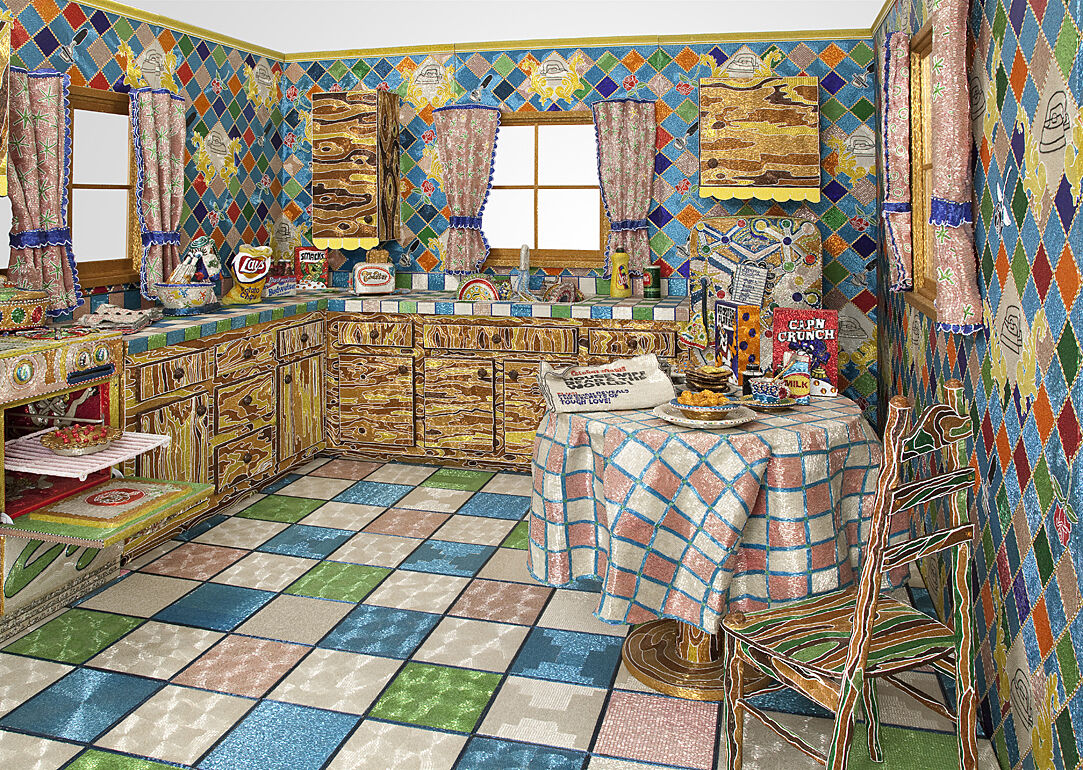Not on view
Date
1974
Classification
Textiles
Medium
Woven linen and steel rods
Dimensions
Overall: 87 1/2 × 85 1/4 × 1 1/4in. (222.3 × 216.5 × 3.2 cm)
Accession number
2014.298
Credit line
Whitney Museum of American Art, New York; gift of the Lenore G. Tawney Foundation
Rights and reproductions
© Lenore G. Tawney Foundation
Visual description
Four Petaled Flower II is a large, thin, geometric woven textile, about 7 feet tall by 7 feet wide. It appears to hover nearly a foot in front of the wall, hanging from steel rods, which are barely visible when the work is viewed straight on. The entire work is dark grey and woven from linen, which gives it a fine nubby texture. The weaving has a delicate linear structure produced by the warp and weft, the perpendicular threads that intertwine to form solid cloth. The textile has a stubby cruciform shape, as if two rectangular panels cross at their middles. The title suggests the form might be an abstracted flower with four short petals. The horizontal weaving is wider than the vertical one, so it is not symmetrical.
At the center, where the two panels overlap, the textile is not solid; there are many closely spaced, long, vertical slits, produced during the weaving process, which creates thin gaps in the otherwise solid composition. Like the shape of the work, the placement of the slashed section is not symmetrical; it’s positioned closer to the top of the overlapped area than to the bottom. The border of solid weaving along the top and sides is nearly even, about 4 inches wide. But along the bottom it nearly triples in width, creating a larger solid section.
The top and bottom edges of both woven panels have short fringe about an inch or two long, which hangs down. Where the two textile panels overlap, there are ridged lines that delineate the work’s rectangular center.
Audio
-
0:00
Lenore Tawney, Four Petaled Flower II, 1974
0:00
Elisabeth Sherman: Four Petaled Flower II es un tejido extenso. Es una escultura hecha de hebras, hecha de hilos. Podría decirse que es una tela con cuatro brazos de un entramado denso. Y cada uno de esos brazos es un tejido totalmente cerrado.
Narrador: Elisabeth Sherman, curadora asistente.
Elisabeth Sherman: Al centro de la composición, Tawney ha incluido unas hendiduras que dejan pasar un poco de luz. Antes de comenzar a trabajar de este modo en los años setenta, los tejidos de Tawney eran mucho más abiertos y diáfanos. A veces solían estar compuestos de luz y espacio vacío casi en su totalidad, con los hilos manteniendo apenas la composición unida.
Creo que este cambio se debe en parte al auge del minimalismo en el mundo del arte. Otra cosa que fue muy importante para ella a lo largo de toda su carrera es la innovación técnica. Recurre a técnicas de hilado que aprendió de varias culturas diferentes, así como a sus vastos conocimientos técnicos sobre la historia de este modo de trabajar en todo el mundo. Pero también a sus propias innovaciones técnicas. Se trata de manipular el telar en sí, y las formas de trabajar con la urdimbre y la trama, los hilos horizontales y verticales en un tejido, para crear estructuras, aperturas y transparencias que antes eran imposibles desde el punto de vista técnico.
-
0:00
Lenore Tawney, Four Petaled Flower II, 1974
0:00
Elisabeth Sherman: Four Petaled Flower II is a large weaving. It is a sculpture made out of fiber, made out of threads. It’s a densely woven fabric with four arms, you could say. And each of those arms is a completely closed weave.
Narrator: Assistant Curator Elisabeth Sherman.
Elisabeth Sherman: At the center of the composition, Tawney has woven in these open slits that allow some light to come through from behind. Prior to working in this way in the seventies, Tawney’s weavings were much more open and diaphanous. They were almost completely composed of light and empty space, with the threads very gently holding the composition together.
I think part of what changes in this period is the rise of Minimalism in the art world. Something else that’s very important to her over the whole span of her career is technical innovation. She’s both drawing on weaving techniques that she’s learned from many different cultures and technical understanding about the history of this mode of working around the world, but also her own technical innovations. So manipulating the loom itself as well as the ways in which you work with warp and weft, the horizontal and vertical threads in a weaving, to create structures and openings and transparencies that previously weren’t technically possible.
Installation photography
-
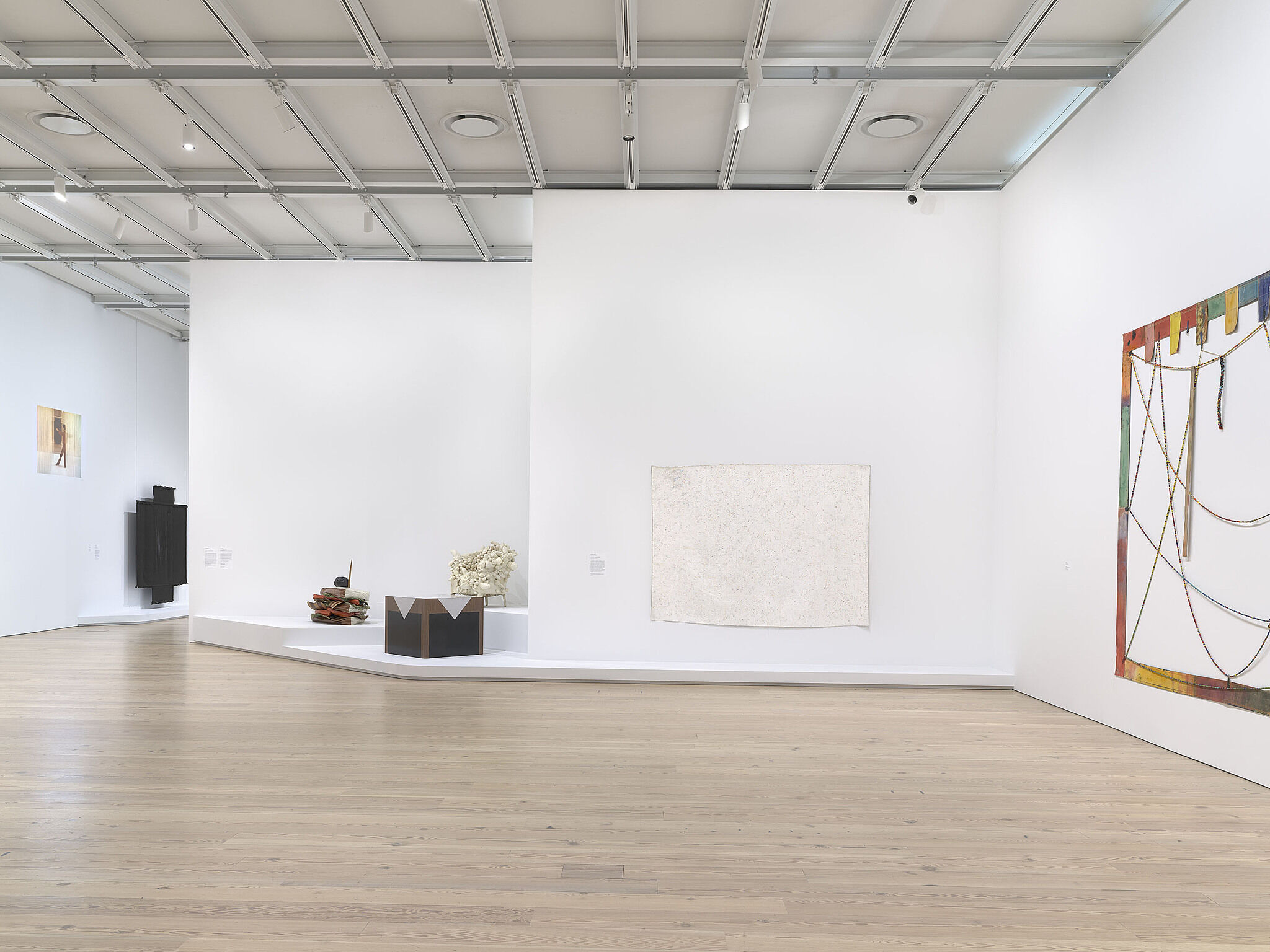

Installation view of Making Knowing: Craft in Art, 1950–2019 (Whitney Museum of American Art, New York, November 22, 2019–January 2021). From left to right: Robyn Brentano and Andrew Horn, Cloud Dance, 1979; Lenore G. Tawney, Four Petaled Flower II, 1974; Claes Oldenburg, Giant BLT (Bacon, Lettuce, and Tomato Sandwich), 1963; Yayoi Kusama, Accumulation, c. 1963; Howardena Pindell, Untitled, 1974–75; Alan Shields, J + K, 1972. Photograph by Ron Amstutz
From the exhibition Making Knowing: Craft in Art, 1950–2019
-
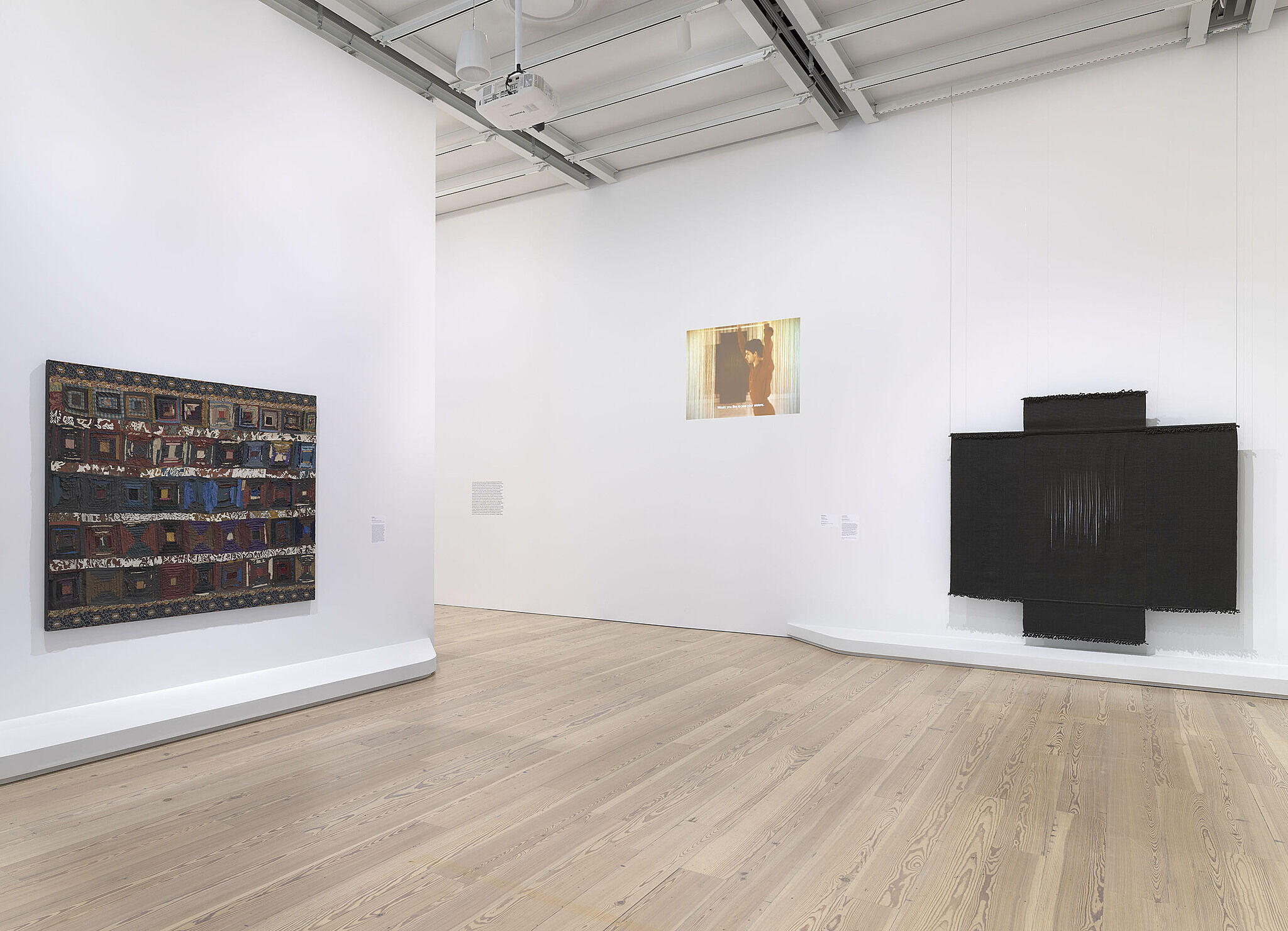

Installation view of Making Knowing: Craft in Art, 1950–2019 (Whitney Museum of American Art, New York, November 22, 2019–January 2021). From left to right: Ann Wilson, Moby Dick, 1955; Robyn Brentano and Andrew Horn, Cloud Dance, 1979; Lenore G. Tawney, Four Petaled Flower II, 1974. Photograph by Ron Amstutz
From the exhibition Making Knowing: Craft in Art, 1950–2019
-
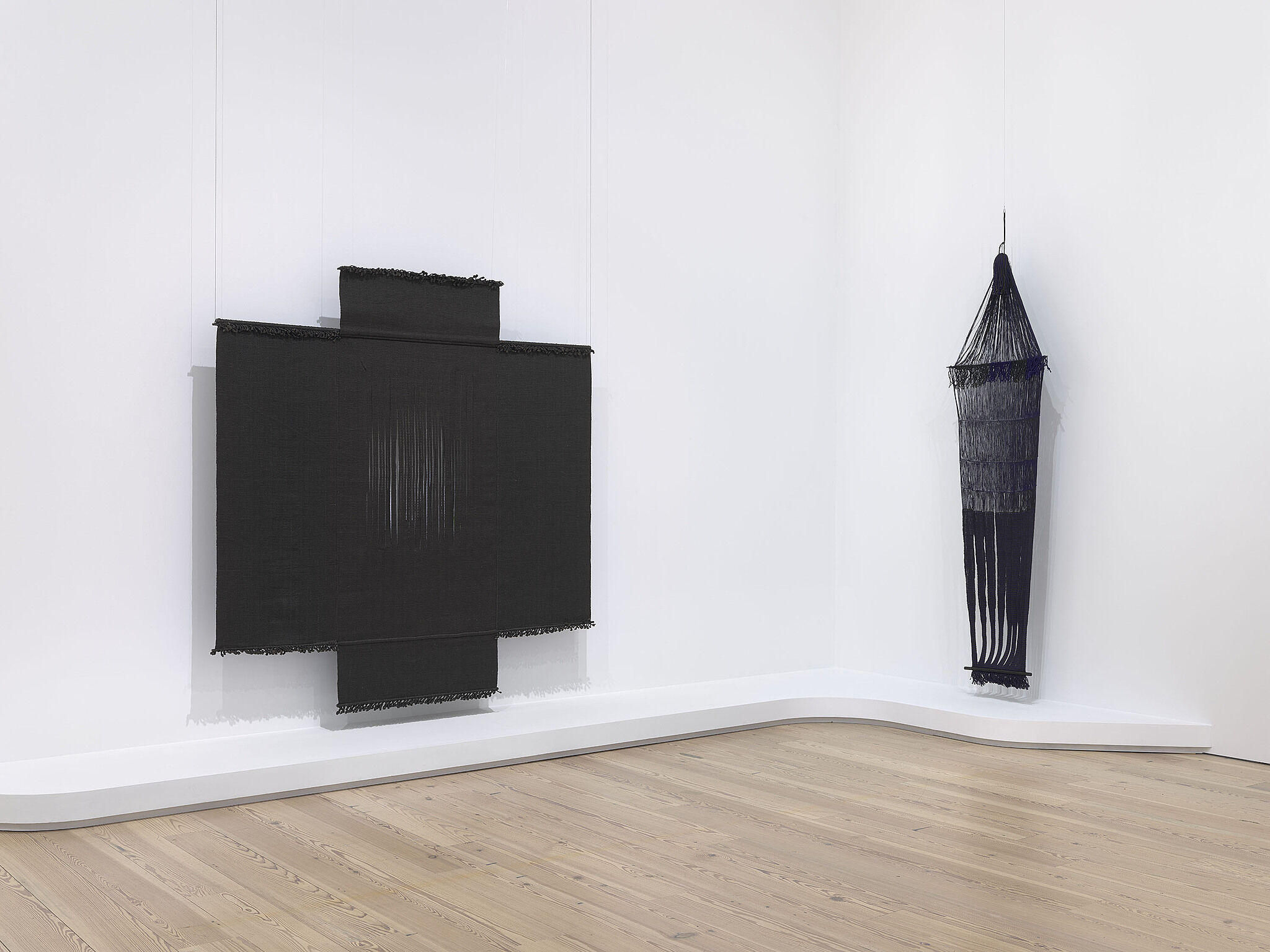

Installation view of Making Knowing: Craft in Art, 1950–2019 (Whitney Museum of American Art, New York, November 22, 2019–January 2021). From left to right: Lenore G. Tawney, Four Petaled Flower II, 1974; Lenore G. Tawney, Spirit River, 1966. Photograph by Ron Amstutz
From the exhibition Making Knowing: Craft in Art, 1950–2019
-
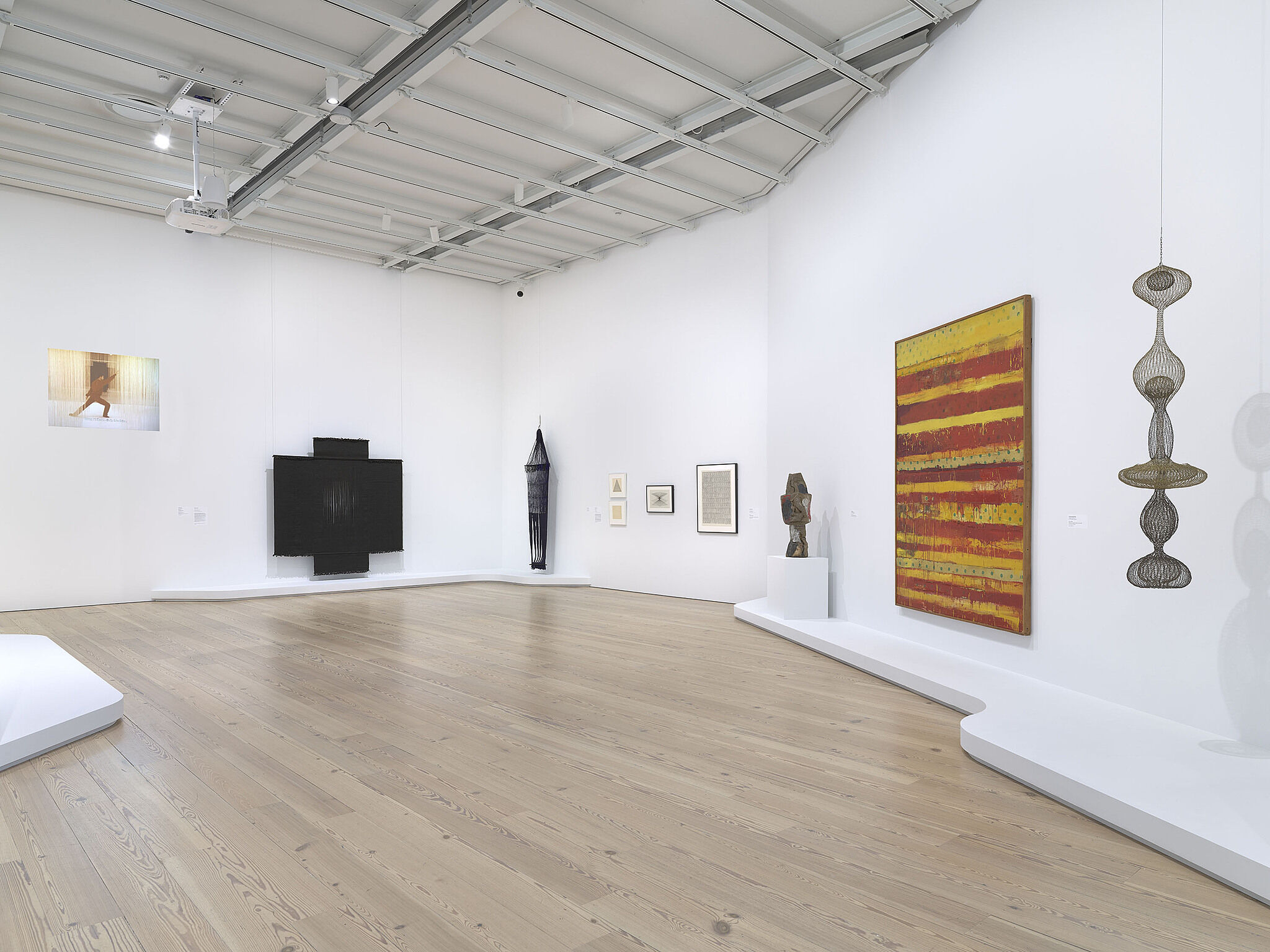

Installation view of Making Knowing: Craft in Art, 1950–2019 (Whitney Museum of American Art, New York, November 22, 2019–January 2021). From left to right: Robyn Brentano and Andrew Horn, Cloud Dance, 1979; Lenore G. Tawney, Four Petaled Flower II, 1974; Lenore G. Tawney, Spirit River, 1966; Agnes Martin, Untitled, c. 1960; Agnes Martin, Untitled, c. 1960; Lenore G. Tawney, The Great Breath, 1964; Chryssa, Untitled (March 26, 1962) from Newspaper Book, 1962; Peter Voulkos, Red River, c. 1960; Robert Rauschenberg, Yoicks, 1954; Ruth Asawa, Untitled (S.270, Hanging Six-Lobed, Complex Interlocking Continuous Form within a Form with Two Interior Spheres), 1955, refabricated 1957-58. Photograph by Ron Amstutz
From the exhibition Making Knowing: Craft in Art, 1950–2019
-
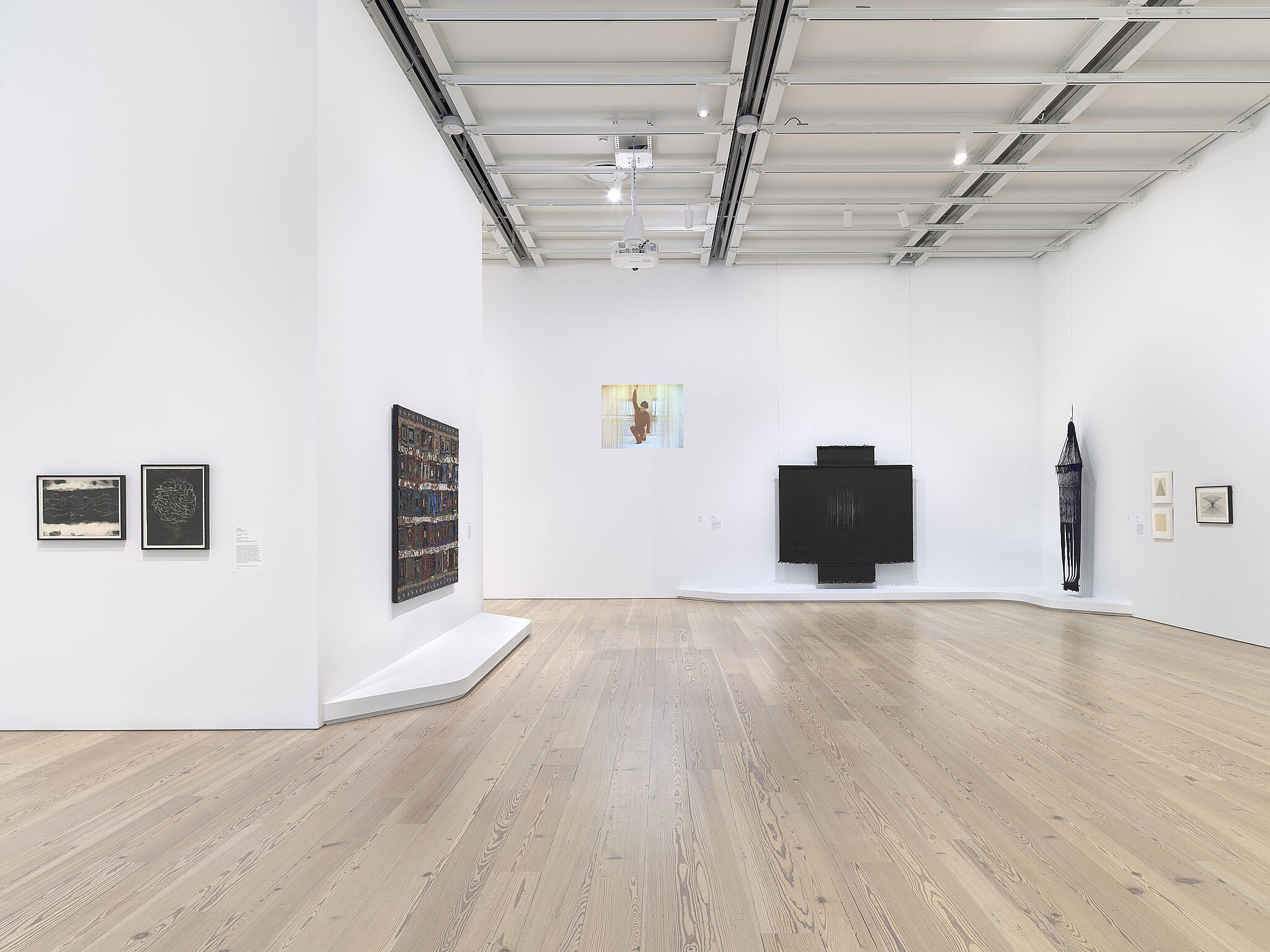

Installation view of Making Knowing: Craft in Art, 1950–2019 (Whitney Museum of American Art, New York, November 22, 2019–January 2021). From left to right: Anni Albers, Line Involvements II, 1964; Anni Albers, Line Involvements VI, 1964; Ann Wilson, Moby Dick, 1955; Robyn Brentano and Andrew Horn, Cloud Dance, 1979; Lenore G. Tawney, Four Petaled Flower II, 1974; Lenore G. Tawney, Spirit River, 1966; Agnes Martin, Untitled, c. 1960; Agnes Martin, Untitled, c. 1960; Lenore G. Tawney, The Great Breath, 1964. Photograph by Ron Amstutz
From the exhibition Making Knowing: Craft in Art, 1950–2019

